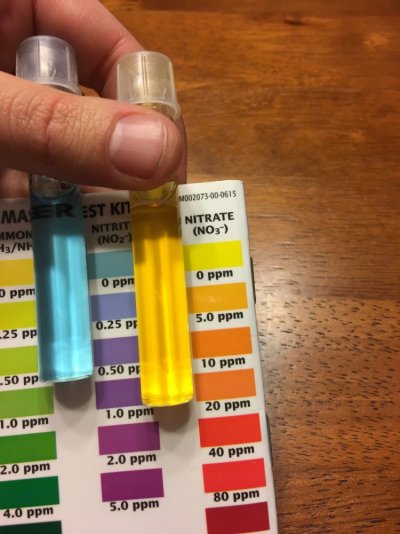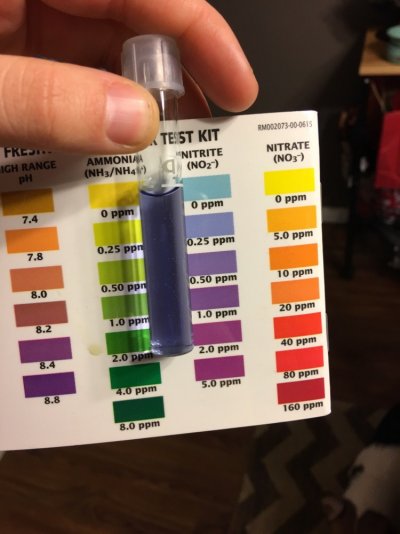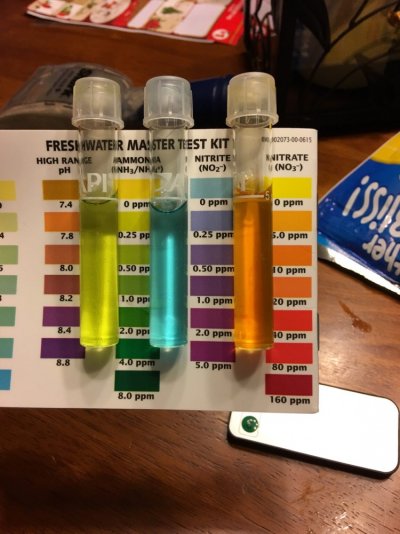Two types of nitrifying bacteria compose the bio filter. You've probably introduced some of the bacteria into the tank through the filter media and water swapped into the new tank. What it appears to me, is that you have plenty o' bacteria that eat nitrites, yet not enough of the little buggers that eat ammonia (and produce nitrites). The two populations of bacteria have to 'equal out'. In my 55 to 60 gallon upgrade I had fluctuations of ammonia and nitrites up to .50 ppm. No fatalities or stress symptoms during the 1 week cycle. (I used the biomedia sponge and 10 gallons of old tank water for my swap) Keeping your nitrate level below 20 ppm will reduce stress on the fish in the tank (with partial water changes).
I only test water just before the 1st feeding of the fish. This is the time the most stable water conditions exist. I test it twice a week (wait 5 minutes after adding drops to read test results). I'll do a 20% water change if the nitrate reading hits 20 ppm, or weekly. Sometimes the water gets changed twice a week, sometimes once... it's a fish tank, not a swiss time piece, things don't happen on an exact schedule.
You're almost there.... hang in there!



